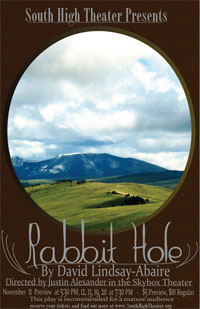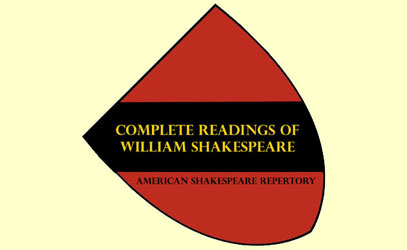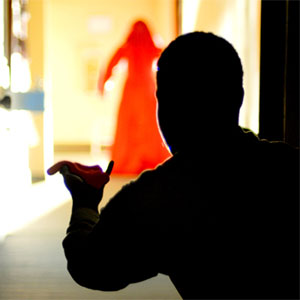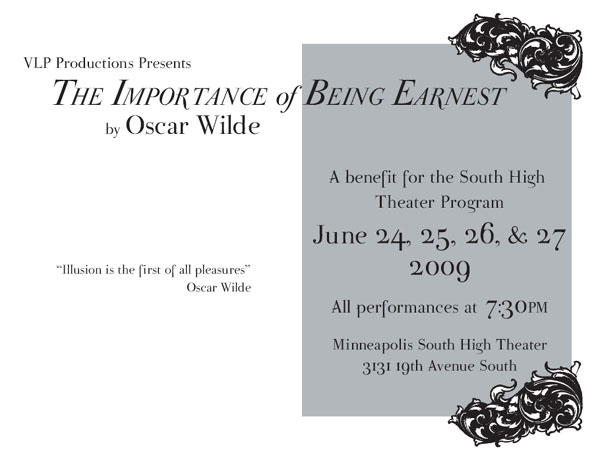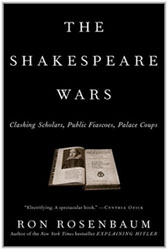 I’ve been reading The Shakespeare Wars by Ron Rosenbaum and writing short essays in response to some of the more dunder-headed bits of scholastic self-indulgence that Rosenbaum has been discussing. (Rosenbaum also discusses a lot of good stuff, and despite some reservations over the quality of Rosenbaum’s writing, I recommend checking his book out for a good review of current controversies in Shakespearean scholarship.)
I’ve been reading The Shakespeare Wars by Ron Rosenbaum and writing short essays in response to some of the more dunder-headed bits of scholastic self-indulgence that Rosenbaum has been discussing. (Rosenbaum also discusses a lot of good stuff, and despite some reservations over the quality of Rosenbaum’s writing, I recommend checking his book out for a good review of current controversies in Shakespearean scholarship.)
Today I want to take a peek at one facet of the debate between the theories of the Lost Archetypes and the Revisions.
To offer a simplistic summary: All modern editions of Shakespeare are based on versions of the plays published during the late-16th and early-17th centuries. All of these texts feature various typo-like errors that must be corrected.
In the case of nineteen plays, however, things get a little more complicated because we have multiple versions of each play published during or near Shakespeare’s life. (For example, we have three extant versions of Hamlet.) In producing a modern edition, the differences between these versions must be resolved in order to produce a single text.
This is where the difference between the Lost Archetype theory and the Revision theory comes into play.
The Lost Archetype theory says that Shakespeare wrote one, authoritative version of each play. In other words, the original manuscript, written in Shakespeare’s own hand, is the Lost Archetype for each play. The differences between the primary sources for a play are the result of different editions making different errors in transcribing Shakespeare’s text, and our goal in rendering a modern edition is to remove these errors.
The Revision theory, on the other hand, says that Shakespeare continued revising his plays throughout his lifetime and that the differences between the various versions of each play are the result of Shakespeare’s rewrites.
For example, the 1604 Second Quarto of Hamlet contains an entire soliloquy which is missing from the 1623 First Folio. Under the Lost Archetype theory, this soliloquy was somehow lost: Perhaps the page was misplaced. Or the typesetter accidentally skipped it. Or the typesetter was working from a theater promptbook that had been cut for length. Basically, there are many different theories to explain how this soliloquy went missing, but the underlying theory is that Shakespeare intended the soliloquy to be part of the play and, therefore, it should be included in the modern text.
Under the Revision theory, on the other hand, the idea is that Shakespeare rewrote the play. At some point between 1604 and 1623, Shakespeare came back to Hamlet and decided to cut that soliloquy. Maybe he cut it for length or pace; or because it was repetitive; or because it cast an inaccurate light on Hamlet’s character. Again, there are many theories for why Shakespeare might have cut it, but the underlying theory is that Shakespeare changed the play and we should ask the question, “Why did he change it?”
TAYLOR’S FOLLY
With these two theories in mind, let’s take a closer look at a particular argument proffered by Gary Taylor (one of the primary advocates for the Revision theory), as shown by Rosenbaum in The Shakespeare Wars:
“There’s always someone standing between you and him. It’s like being at a cocktail party and there may be one person in the room that really interests you most, but there’s other people around, and so it’s like seeing Shakespeare across the room at a party. There’s always going to be parts of him you can’t see, and which parts you do see is partly accidently…”
And yet, he tells me, it was his communion with the inky traces of the compositors and typographers that led him to see, through an ink-smudged glass, darkly, a vision of Shakespeare as a reviser.
It was a reaction to what he calls the “demonization” of the compositors by the partisans of the Lost Archetype who try to blame the variations between the two Hamlets on the inattention, the “eye skip”, the carelessness, the willfulness and wandering eyes of an array of compositors. On the contrary, Taylor believes, “You need only one agent to account for all those variations and that’s the agent who’s present in all these cases: Shakespeare.”
And right there is the point where Taylor’s logic runs aground.
I can say this with a fair degree of confidence for three reasons:
(1) We know that compositors made errors because the publisher would frequently correct them during a print run. In other words, there are differences between the various copies of the 1604 Second Quarto of Hamlet that survive today. I suppose one might still imagine that Shakespeare was actually at the printers, looking over their shoulders and doing rewrites while the book was being published, but…
(2) Compositor errors are not limited to the work of Shakespeare. They can be found in every single book published in this era. The King James Bible is particularly noted by many scholars because it contains so few errors compared to other texts of the era, but it still contains hundreds of known errors. And maybe, like our hypothetical Shakespeare, every author of the era — including the translators of the King James Bible — made a habit of going down to the print shop to make rewrites on the fly, but…
(3) The errors continue long after Shakespeare is dead. For example, the First Folio was published in 1623 (seven years after Shakespeare was dead). Over the course of the 17th century it was followed by the Second Folio (1632), Third Folio (1663-1664), and the Fourth Folio (1685). These later editions are essentially never used in the creation of modern editions because
(a) We know that they were based on the text of the First Folio. (In other words, the typesetters of these later editions were looking at copies of the First Folio or other editions derived from the First Folio.)
(b) They introduce even more errors of the exact same type seen in the earlier texts. (They also attempt to fix some of the existing errors, but since they’re doing so without any reference to a primary text, we have no particular reason to invest trust or value in their decisions.)
This is what I refer to as Shakespeare Myopia. Shakespeare is such a towering figure in English literature that lots of people will study him exclusively. And this, in my experience, results in all kinds of half-assed theories that wouldn’t have any kind of traction if people would look outside of the Shakespeare Box once in awhile.
(Another example of Shakspeare Myopia can be found all over the so-called “Authorship Question”. For example, people looking to discredit Shakespeare’s authorship of his own plays will often declaim the lack of historical evidence we have for Shakespeare’s life. The only problem? We have more documented evidence of Shakespeare’s life than for any other Elizabethan playwright with the possible exception of the always self-promoting Ben Jonson. For those interested in a thorough debunking of the “Authorship Question”, I recommend Irvin Leigh Matus’ exceptional Shakespeare, In Fact.)
SHADES OF GREY
In any case, unless one is willing to believe that Shakespeare was still rewriting his plays as late as 1685, we know for an absolute certainty that at least some of the variances between the texts are the result of typesetting errors and not Shakespeare’s revisions.
And if we have concluded that some of them must be, then doesn’t it make sense to apply Ockham’s Razor and say that all of them are the result of typesetting errors?
Well… maybe.
But misplacing a whole soliloquy seems like quite the slip of the eye, doesn’t it? Maybe we could hypothesize that the soliloquy was on a page all by itself in the manuscript and either that page got misplaced or two pages got flipped over at the same time or… Well, any number of things. But it seems just as likely that the soliloquy was deliberately removed from whatever text the compositor of the 1623 First Folio was working from.
But here we run into two more problems with the Revision theory:
(1) We have no way of knowing who did the revising. It might have been Shakespeare who cut that soliloquy. But it could just as easily have been a theater manager who thought the play was too long. In other instances, of course, words have been added. But it was a well-documented practice for other playwrights to touch-up older works and it remains a common (if often frowned upon) practice in the theater for promptbooks to reflect improvisations from the actors of the current production.
(2) We have no way of knowing which text is the original and which text is the revision. It’s easy, for example, to assume that the 1623 First Folio text of Hamlet would be the revision of the 1604 Second Quarto text. But the 1623 text could just as easily be the copy that Shakespeare originally gave to the Globe Theater to perform in 1600, while the 1604 text is the result of Shakespeare revising the text before submitting it for publication.
Personally, I feel like attempts to apply a one-size-fits-all solution to the relationships between the various primary sources of Shakespeare’s plays is somewhat foolish. Among these theories:
(a) Bad Quartos. The result of pre-copyright publishers trying to surrepititously obtain a copy of a play to publish without paying for it, either by having someone in the theater trying to write down the lines as fast as they can or by hiring a former actor to reconstruct the text from memory.
(b) Revision. Shakespeare rewrote the plays to lesser or greater extents.
(c) Derived texts. Some texts in the First Folio appear to have been set from previously published quartos; some from manuscript (although whether it would be Shakespeare’s original or a scribed copy is often open for debate); some from theater promptbooks.
In my opinion, all of these have some merit. In fact, it makes sense that different texts would have different relationships (both to each other and to Shakespeare). It seems silly to argue that if King Lear was rewritten by Shakespeare, then it must also be true that Shakespeare rewrote Hamlet. (Or, vice versa, that if Shakespeare didn’t rewrite Hamlet, it must be true that he didn’t rewrite King Lear.)
But this is so often what happens: Somebody comes up with a nifty theory and then they try to apply it everywhere. They overreach.
For example, A Midsummer Night’s Dream exists in three primary sources: The 1600 First Quarto, 1619 Second Quarto, and 1623 First Folio. We are almost completely certain that the 1619 Second Quarto was set from a copy of the 1600 First Quarto (based on textual similarities in which the 1619 text duplicates the unusual spellings, incorrect speech attributions, typographic features, and various other errors of the 1600 text in a way that only makes sense if the compositor of the 1619 text were looking at the 1600 text).
In most cases, therefore, moden editor would largely ignore the 1619 text as a mere reprint. But here it gets weird because the 1623 First Folio was almost certainly set from a version of Q2 (once again we have similarities between the texts, but where the 1619 Second Quarto differs from the 1600 First Quarto, the 1623 First Folio always follows the 1619 Second Quarto). And, once again, we would normally ignore this text… except that information from the theater’s prompt-book has apparently been added to it.
(How do we know it was a prompt-book? Several bits suggest it, but the clincher is a stage direction in V.1: “Tawyer with a trumpet before them.” Tawyer was the name of a company member, not a character.)
Dover Wilson postulated that a copy of the 1619 Second Quarto must have been used as a prompt-book at the Globe and then that prompt-book was used to set the type for the 1623 First Folio. Some doubt has been cast on this theory due to errors in various entrances and exits (which would never be tolerated in a theater manager’s copy of the script), but it seems more likely that those errors were introduced by the compositor.
The result is that we have a very clear textual lineage for these scripts: The 1600 First Quarto was published from some unknown source. The 1619 Second Quarto was set from the 1600 edition and was accurate enough that the theater started using it as their promptbook, which was then used (in turn) for the 1623 First Folio.
But I think it would be foolish to draw any broad conclusions from this. (For example, by assuming that all First Folio texts were printed from theater promptbooks.) When it comes to the history of Shakespeare’s texts, there are no easy answers. No one-size-fits-all solutions that will remove all doubts. (In this, they are much like the plays themselves.)

